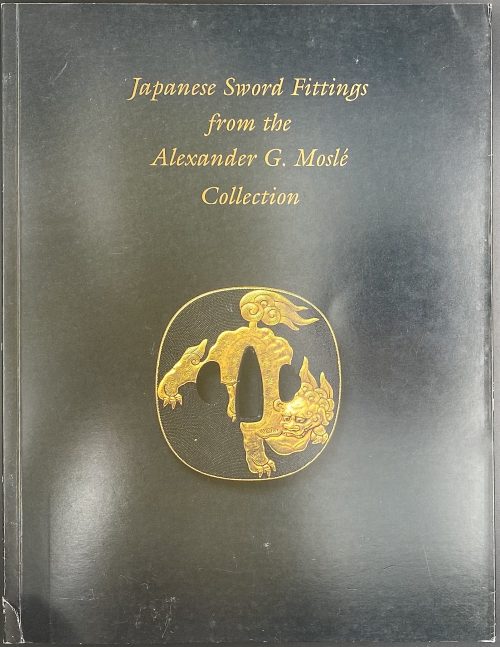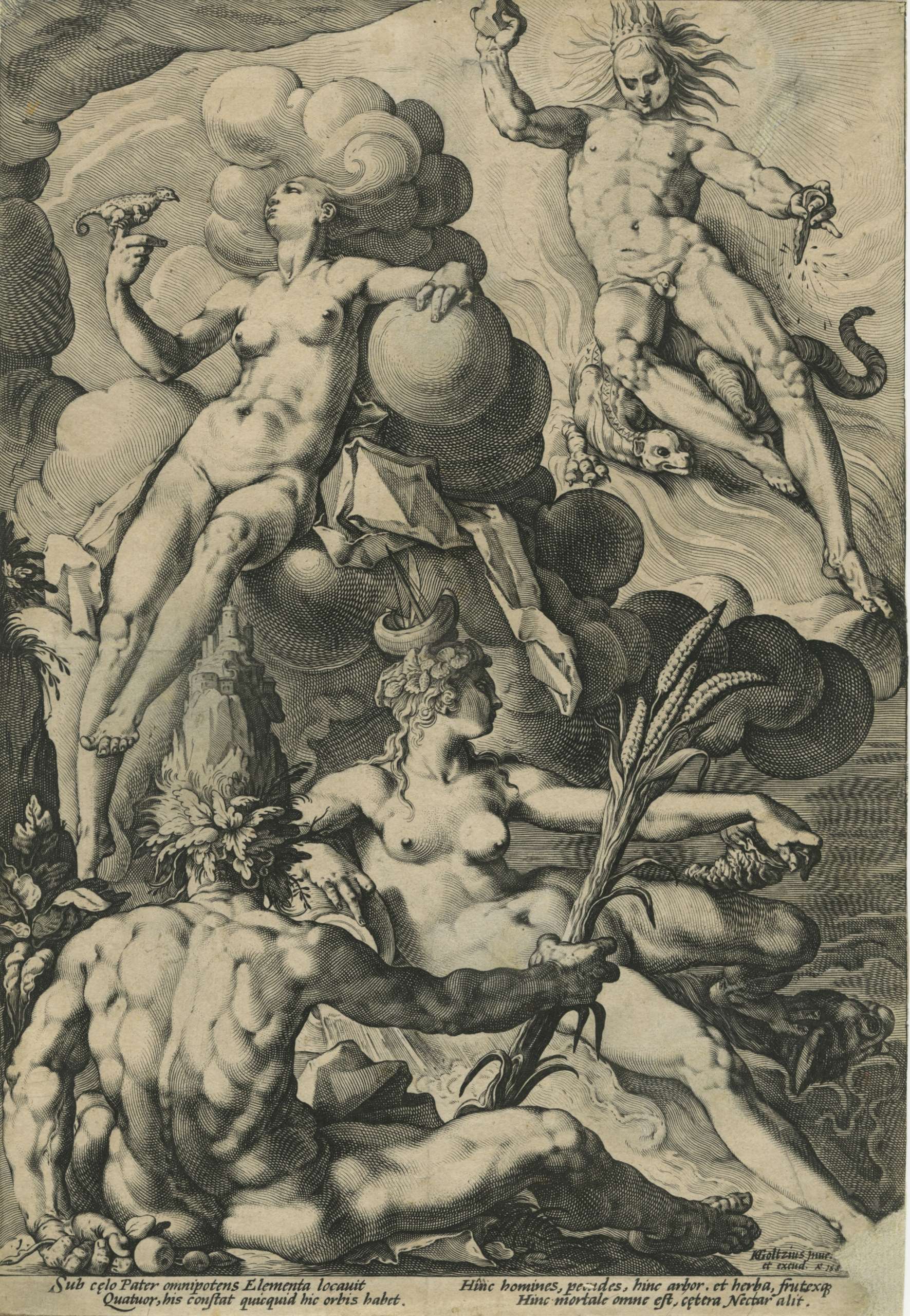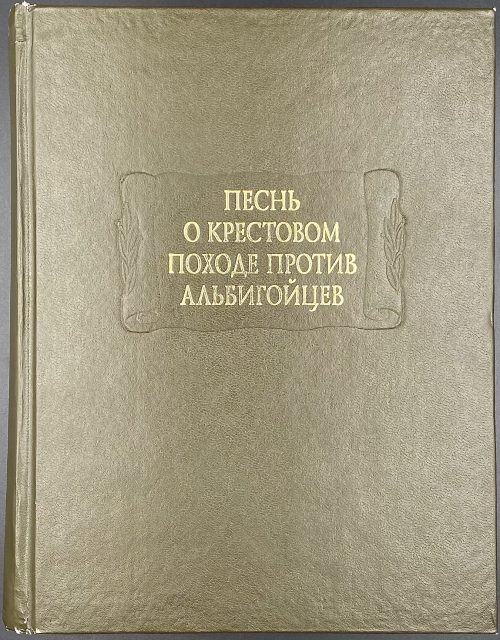-
 Iron tsuba of round form decorated with eight circular emblems of flowers and/or family crests (mon) made of cast brass, pierced and chiseled in kebori, as well as with flat brass inlay (hira-zōgan) of vines, leaves, and flowers all over the plate. Yoshirō school (Kaga-Yoshirō). The Momoyama or early Edo period, 17th century. Size: diameter 80 mm, thickness at seppa-dai 3,6 mm. Symbols: [12:00 o'clock] - Wood sorrel (katabami) and swords ; [9:00] - Cherry blossom (sakura); [7:30] - Bellflower (kikyō), kamon of Toki clan; [3:00] - possibly, a six-petal Chrysanthemum (kiku) or a Passion flower (tessen); [1:30] - Hemp (asanoha). The symbols at 6:00, 10:30, and 4:30 o'clock seem to be geometrical patterns of auspicious meaning: a cross in a square, a four pointing star, and a diamond, respectively. Alternatively, we may look at this piece as purely decorative, with patterns at 12:00, 3:00, 6:00, and 9:00 o'clock in negative openwork (in-sukashi), and at 1:30, 4:40, 7:20, and 10:30 o'clock - in positive openwork (ji-sukashi, or yō-sukashi). Markus Sesko in his Handbook of sword fittings related terms [Herstellung und Verlag: Books on Demand GmbH, Norderstedt, 2011] discriminates this type of openwork in a separate class: Ranma-sukashi: "This term is applied to circular sukashi with family crests to their inside, which are arranged running along the rim area. The description goes back to the opened boards (ranma) between the sliding doors and the ceiling of Japanese rooms. Ranma-sukashi are mostly seen on old Heianjō- or Yoshirō-zōgan-tsuba but also on works of Hayashi Matashichi" [page 30].
Iron tsuba of round form decorated with eight circular emblems of flowers and/or family crests (mon) made of cast brass, pierced and chiseled in kebori, as well as with flat brass inlay (hira-zōgan) of vines, leaves, and flowers all over the plate. Yoshirō school (Kaga-Yoshirō). The Momoyama or early Edo period, 17th century. Size: diameter 80 mm, thickness at seppa-dai 3,6 mm. Symbols: [12:00 o'clock] - Wood sorrel (katabami) and swords ; [9:00] - Cherry blossom (sakura); [7:30] - Bellflower (kikyō), kamon of Toki clan; [3:00] - possibly, a six-petal Chrysanthemum (kiku) or a Passion flower (tessen); [1:30] - Hemp (asanoha). The symbols at 6:00, 10:30, and 4:30 o'clock seem to be geometrical patterns of auspicious meaning: a cross in a square, a four pointing star, and a diamond, respectively. Alternatively, we may look at this piece as purely decorative, with patterns at 12:00, 3:00, 6:00, and 9:00 o'clock in negative openwork (in-sukashi), and at 1:30, 4:40, 7:20, and 10:30 o'clock - in positive openwork (ji-sukashi, or yō-sukashi). Markus Sesko in his Handbook of sword fittings related terms [Herstellung und Verlag: Books on Demand GmbH, Norderstedt, 2011] discriminates this type of openwork in a separate class: Ranma-sukashi: "This term is applied to circular sukashi with family crests to their inside, which are arranged running along the rim area. The description goes back to the opened boards (ranma) between the sliding doors and the ceiling of Japanese rooms. Ranma-sukashi are mostly seen on old Heianjō- or Yoshirō-zōgan-tsuba but also on works of Hayashi Matashichi" [page 30]. -
 Softcover, in black pictorial flapped wrappers, 28 x 21.8 cm, 16 entries, with colour illustrations. Catalogue # 8 of the sales exhibition on March 23-30 2004 in NY; pagination: [1-3] 4-50 [2], ils., some folding. Front cover: gilt on a black background: Japanese Sword Fittings | from the | Alexander G. Moslé | Collection | {vignette ‘tsuba with shishi lion} || Contributor: Sebastian Izzard
Softcover, in black pictorial flapped wrappers, 28 x 21.8 cm, 16 entries, with colour illustrations. Catalogue # 8 of the sales exhibition on March 23-30 2004 in NY; pagination: [1-3] 4-50 [2], ils., some folding. Front cover: gilt on a black background: Japanese Sword Fittings | from the | Alexander G. Moslé | Collection | {vignette ‘tsuba with shishi lion} || Contributor: Sebastian Izzard -

The Four Elements by Jacob Matham (Netherlandish, Haarlem 1571–1631 Haarlem) after Hendrick Goltzius (Netherlandish, Mühlbracht 1558–1617 Haarlem). Engraving on copper, printed on laid paper, 1588.
Dimensions: 298 mm × 206 mm.
-
 Title (black and red): ПЕСНЬ | О КРЕСТОВОМ | ПОХОДЕ ПРОТИВ | АЛЬБИГОЙЦЕВ | {device} | Издание подготовили | И.О. БЕЛАВИН, Е.В. МОРОЗОВА | Научно-издательский центр | «Ладомир» | «Наука» | Москва || Frontispiece (black and red): LA CHANSON DE | LA CROISADE | ALBIGEOISE | {device} || Pagination : [1-9] 10-437 [3] ; 79 illustr. on 20 leaves of colour plates between pp. 224/225, inset: folding double-sided map of the Albigensian Crusade43 x 64 cm; print run 2,000 copies. Binding: serial green buckram blind-stamped with a scroll adorned with gold lettering to board and spine. Отв. ред. М. Л. Андреев. Ред. изд-ва Л. А. Сифурова.
Title (black and red): ПЕСНЬ | О КРЕСТОВОМ | ПОХОДЕ ПРОТИВ | АЛЬБИГОЙЦЕВ | {device} | Издание подготовили | И.О. БЕЛАВИН, Е.В. МОРОЗОВА | Научно-издательский центр | «Ладомир» | «Наука» | Москва || Frontispiece (black and red): LA CHANSON DE | LA CROISADE | ALBIGEOISE | {device} || Pagination : [1-9] 10-437 [3] ; 79 illustr. on 20 leaves of colour plates between pp. 224/225, inset: folding double-sided map of the Albigensian Crusade43 x 64 cm; print run 2,000 copies. Binding: serial green buckram blind-stamped with a scroll adorned with gold lettering to board and spine. Отв. ред. М. Л. Андреев. Ред. изд-ва Л. А. Сифурова.


